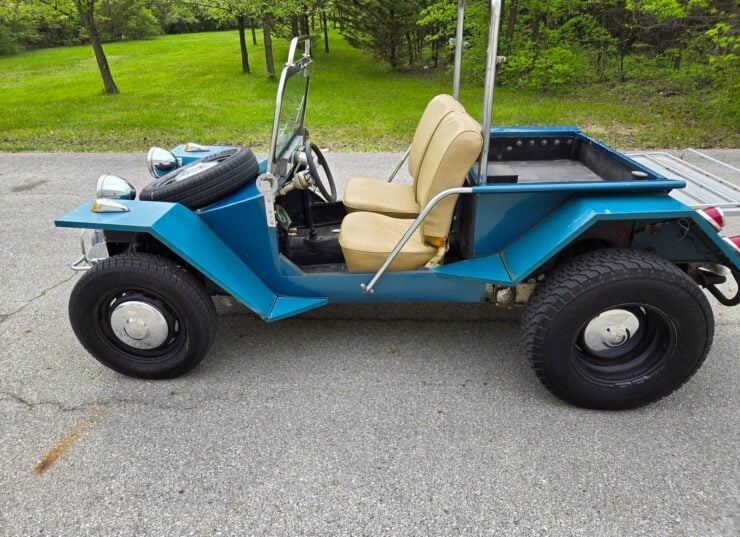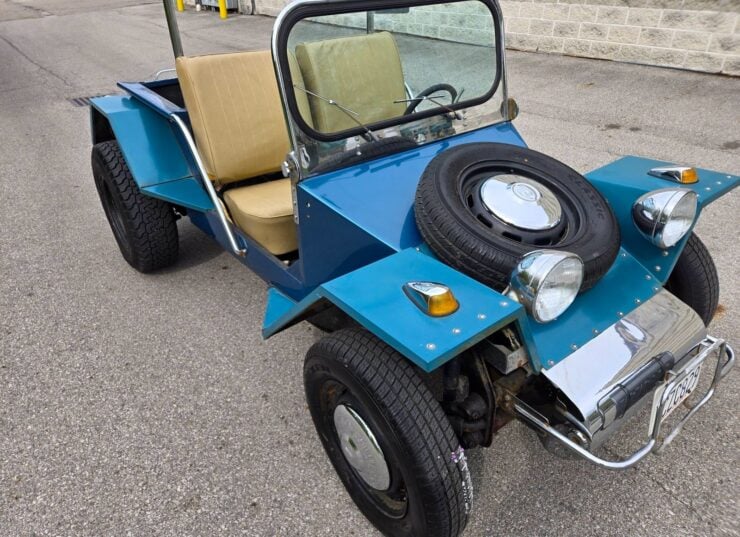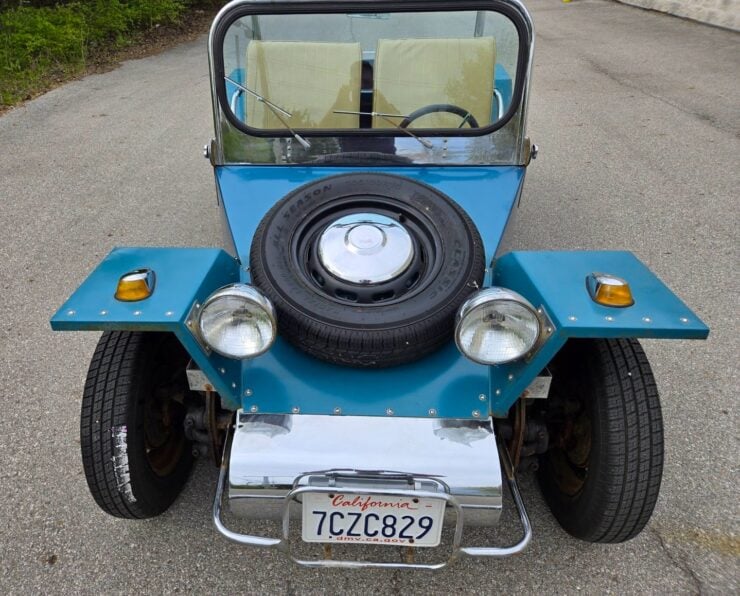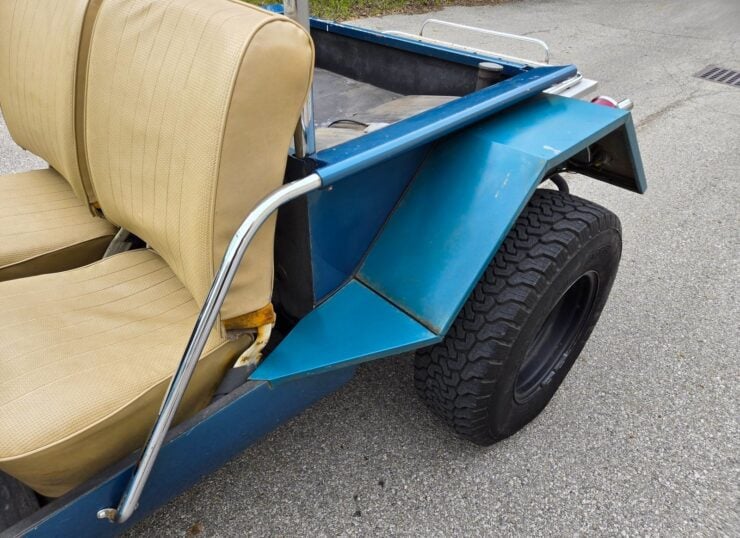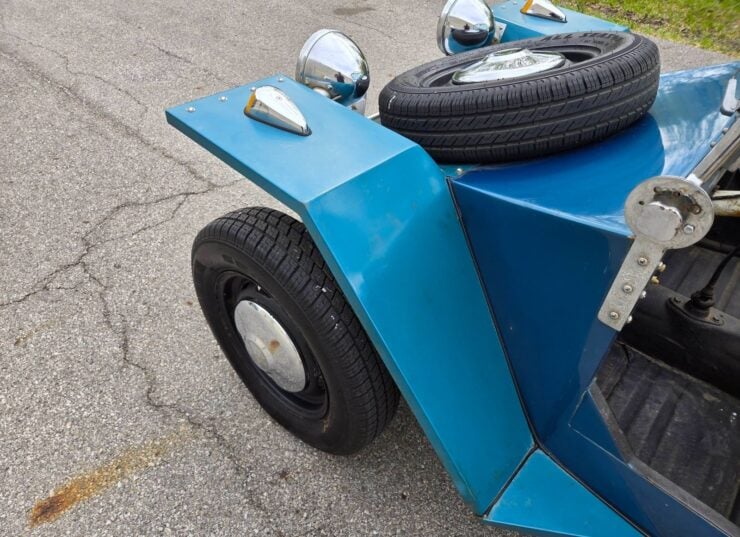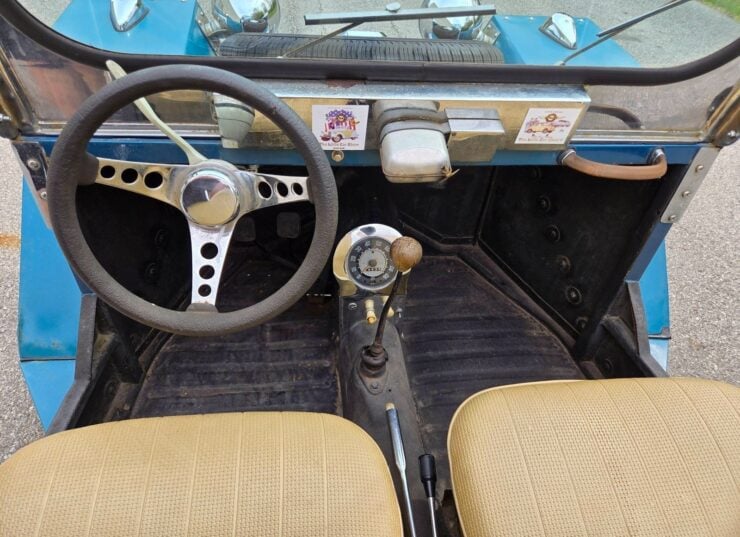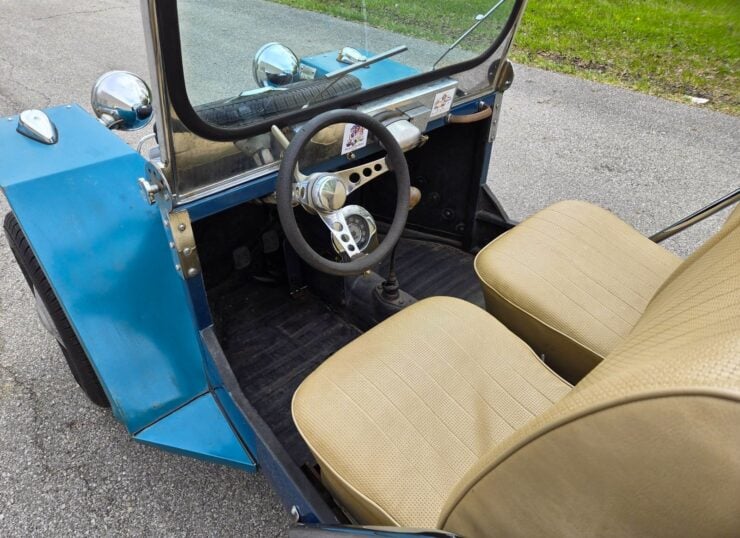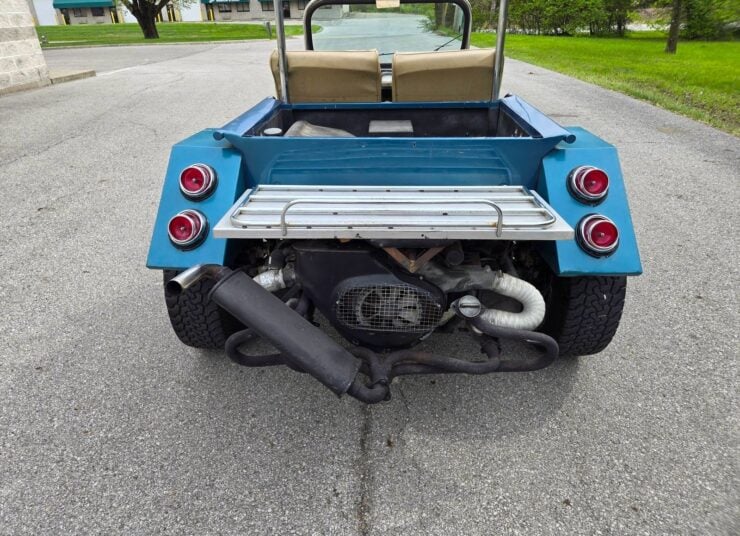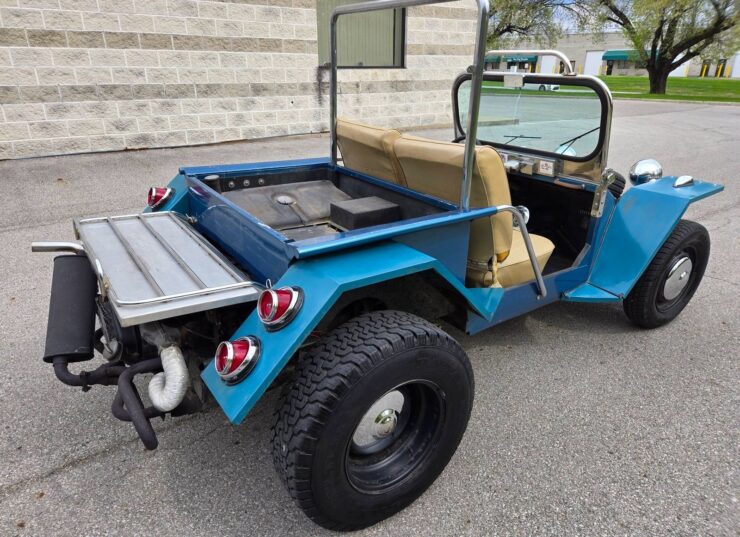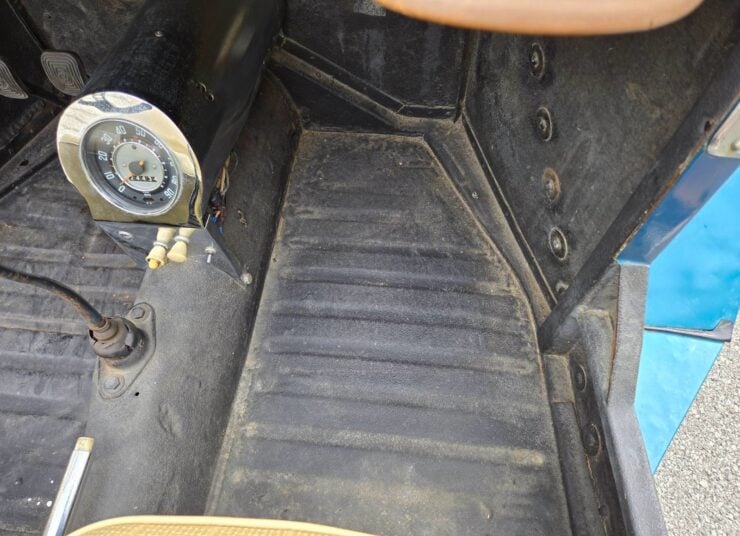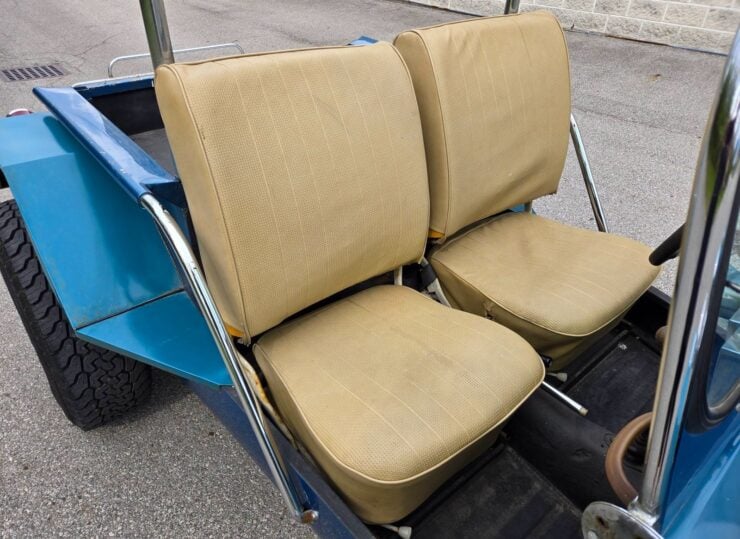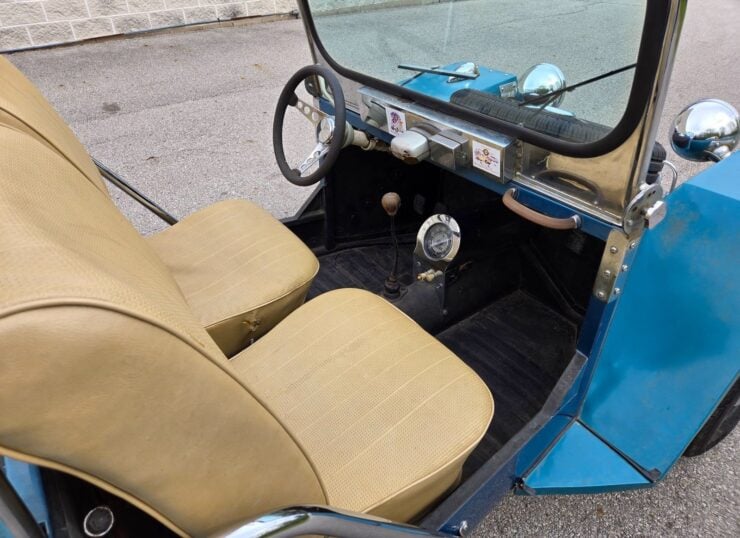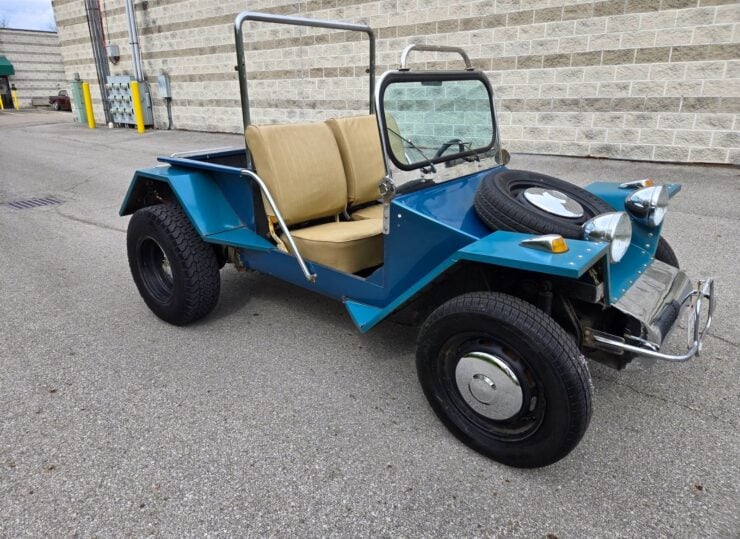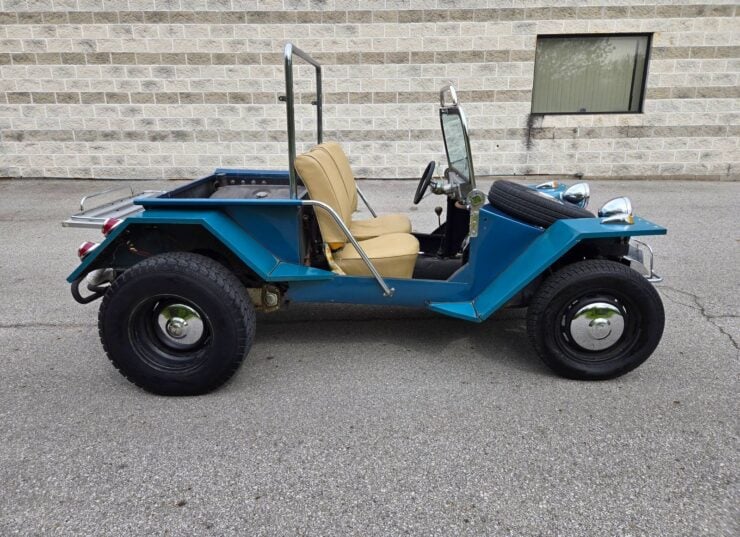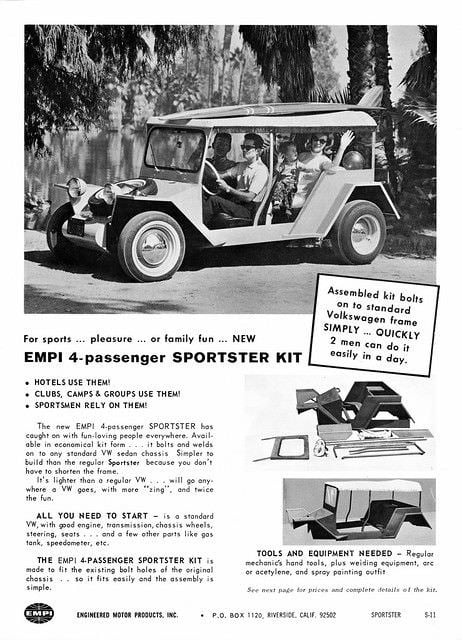This is an EMPI Sportster, it’s currently for sale on eBay for $7,000 USD which seems like a steal given the important history that the car (or buggy) represents.
EMPI was founded by Joe Vittone in Riverside, California in the 1950s to sell performance parts for VW Beetles. In 1960 the EMPI Sportster was released, it was a kit-built dune buggy with a simple steel body on a shortened Beetle chassis – a pre-cursor to the legendary Meyers Manx.
Fast Facts – The EMPI Sportster
- The EMPI Sportster, developed by Joe Vittone’s company EMPI in 1960, was a pivotal early dune buggy kit based on the VW Beetle chassis. Its minimalist, angular steel body made it significantly lighter and more capable off-road than the original Beetle, possibly influencing the iconic Meyers Manx buggy which was developed later.
- EMPI (Engineered Motor Products, Inc.) began when Joe Vittone identified and solved a common VW Beetle issue – worn valve guides – leading to massive aftermarket success. The company quickly expanded to sell popular upgrades, including suspension and engine upgrades as well as chrome accessories.
- One of the most popular EMPI products was the “camber compensator,” a rear stabilizer designed to prevent dangerous wheel tuck-in common to swing-axle Beetles during aggressive cornering. This product was a major commercial success, selling over 100,000 units globally and establishing EMPI as a leader in VW aftermarket parts.
- Despite EMPI Sportster was sold as a kit that home builders could fit to a Beetle chassis in their garage. The 1961 example shown in this article is listed for $7,000 on eBay. It appears to be unusually well-preserved, retaining its original steel panels, and its powered by a Beetle 1,500cc flat-four.
Joe Vittone And EMPI
Joe Vittone was a Volkswagen dealer in California who had many customers coming in with the same exact issue: worn out valve guides. VW would instruct customers to simply fit new cylinder heads, but Vittone knew he could do better, so he developed his own heavy duty valve guide design and began selling them. They quickly became a wildly popular product, saving VW owners hundreds of dollars, and it showed how large the Volkswagen aftermarket parts market could be.
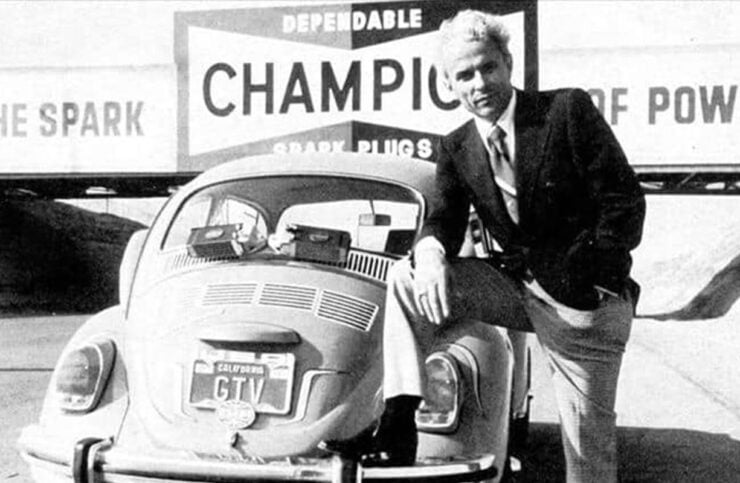

He soon founded EMPI, initially European Motor Products, Inc. but later changed to Engineered Motor Products, Inc., and began to work on other upgrades for the humble VW Beetle – one of the most popular economy cars in California at the time.
Before long, EMPI was selling engine performance upgrades, chrome dress kits, and suspension upgrades including a wildly popular front sway bar that transformed the handling of the Beetle – and may have even inspired Volkswagen to release their own front sway bar a few years later in 1960.
EMPI would later develop a rear stabilizer that stopped the back wheels tucking under during hard cornering due to their swing axles this was a major issue for some more spirited Beetle drivers. Officially named the camber compensator, this product would become a best-seller, with over 100,000 units sold around the world.
As the 1950s turned into the 1960s, EMPI had become the largest American aftermarket parts company for Volkswagens, and their annual sales grew to the $5 – $6 million level. The company would go through a couple of acquisitions and it still remains in business today, selling a huge range of parts for Volkswagens to owners around the world.
The EMPI Sportster
One of the most important, but most forgotten EMPI products that was ever made, was the EMPI Sportster. Many Californians had taken to chopping up their VW Beetles and turning them into off road buggies, a trend that would eventually lead to the development of what we now know as the Baja Bug – a Beetle that’s been transformed for off road racing.
Joe Vittone and the team at EMPI saw this trend as it was starting out, and realized they could build a simple steel body kit that would bolt to a shortened Beetle floorpan and create a capable, lightweight buggy.
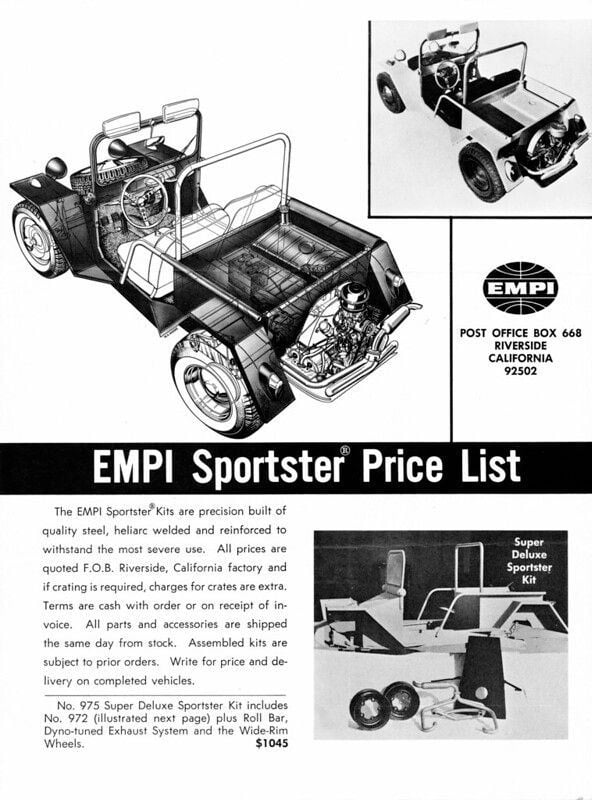


The design of the EMPI Sportster was utilitarian to say the least, with simple flat steel panels that had been cut, bent, and welded to shape. EMPI didn’t have the facilities required to stamp out curved steel panels, so they came up with a design that simply didn’t need them.
Thanks to the fact that the entire steel VW Beetle body was removed, the chassis was shortened, and a much more lightweight (and minimalist) body was fitted, the Sportster was significantly lighter than the Beetle it started out as. It was also a whole lot more off road capable, and these unusual, angular buggies soon became a common sight in the desert playgrounds of the west coast.
EMPI would offer the Sportster in their catalogue in both two-seat and four-seat from, and they would advertise it in the back of the Volkswagen and car enthusiast magazines of the day. It’s not known exactly how many kits were sold, or how many of those were built into completed buggies, but we do know that very few seem to have survived to the modern day.
The idea of shortening the Beetle platform and fitting a new lightweight body over the top would be picked up by Bruce Meyers, who developed the Meyers Manx– arguably the most famous dune buggy design in the world.
With its curved, beautifully-styled, one-piece fiberglass body, the Meyers Manx would soon become the best-selling VW-based kit car in history, and certainly the most famous. Interestingly, EMPI would follow the Manx with their own fiberglass-bodied dune buggy named the EMPI Imp.
The EMPI Sportster Shown Here
The car you see here is one of those rare surviving examples of the EMPI Sportster. This actually appears to be one of the best examples we’ve seen come up for sale in recent memory, without the obvious signs of rust showing through in any panels.
It’s a 1961 EMPI Sportster with a blue body and cream upholstered seats. It does have some rudimentary rollover protection in place, as well as side bars, a front nudge bar, and a rear cargo shelf. It’s powered by a 1,500cc Volkswagen flat-four and power is sent to the rear wheels via a 4-speed manual VW transaxle.
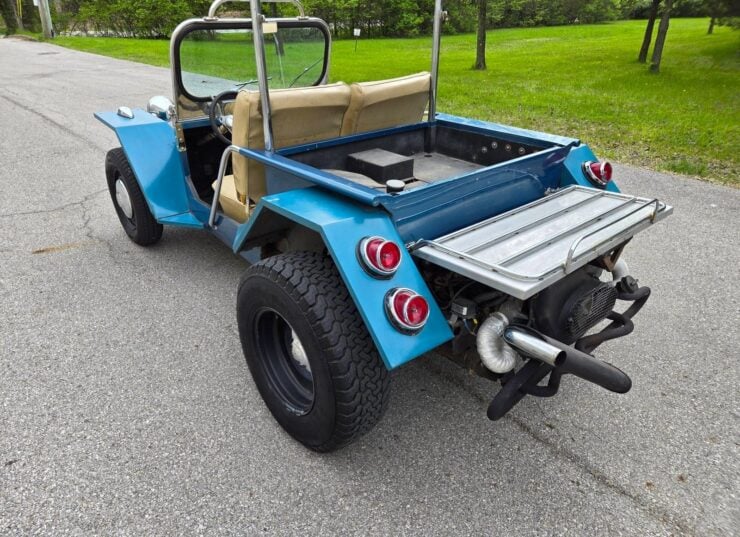


This Sportster is being offered for sale on eBay out of Columbus, Ohio with an asking price of $7,000 USD, which does seem affordable for such an important piece of early dune buggy history.
If you’d like to visit the listing to read more about it or enquire about buying it you can visit the listing here.
Images provided by Foreign Classics


